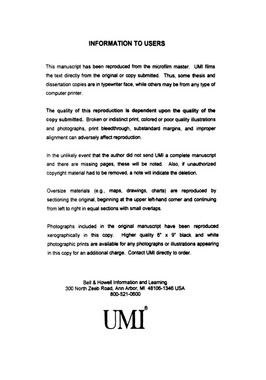| dc.contributor.advisor | Mallinson, Richard G., | en_US |
| dc.contributor.author | Larkin, David William. | en_US |
| dc.date.accessioned | 2013-08-16T12:18:04Z | |
| dc.date.available | 2013-08-16T12:18:04Z | |
| dc.date.issued | 2001 | en_US |
| dc.identifier.uri | https://hdl.handle.net/11244/261 | |
| dc.description.abstract | In regards to the system's energy usage, increases in methane conversion resulted in increases in the system's energy consumption due to limited partial pressures of oxygen within the reaction zone. | en_US |
| dc.description.abstract | This work shows that when changing from a pure methane feed to a 3:1 methane-oxygen feed, the methane conversion rate increased by a factor of three. This is because active oxygen species activate methane, which results in the methane reaction rate being enhanced. The effects of temperature on product selectivity were also studied through the use of a water jacket. Lowering the temperature of water within the water jacket from 75° C to 28° C resulted in a 54% increase in organic oxygenate selectivity and a 56% decrease in COx selectivity. This is because lowering the system temperature reduced the organic oxygenates' vapor pressures to that of their equilibrium partial pressures, resulting in in situ removal of these products from the reaction zone via condensation. | en_US |
| dc.description.abstract | The effects of changing the electrical properties within a methane-oxygen DBD system were also investigated. Increasing the gas gap from 4.0 mm to 12.0 mm caused the reduced electric field to decrease from 30 volts/cm/torr to 18 volts/cm/torr, which resulted in a shift in the product distribution from organic oxygenate liquids to ethane, ethylene, and acetylene. This is because the energy deposition directed toward oxygen dissociation was decreasing and the energy deposition directed toward methane and oxygen excitation was increasing. Finally, this work shows, through residence time studies, that methane and oxygen react to form methanol, which further reacts to form formaldehyde, methyl formate, and formic acid. | en_US |
| dc.description.abstract | Driven by the need to process natural gas economically in remote areas, homogeneous one-step partial oxidation of methane is being investigated actively by many researchers. The present work focuses on the direct homogeneous oxidative conversion of methane to organic oxygenates (methanol, formaldehyde, methyl formate, and formic acid) using a dielectric barrier discharge (DBD) reactor. The DBD reactor for this work is annular, consisting of two metal electrodes separated by a gas gap and a glass dielectric covering the outer surface of the inner electrode. | en_US |
| dc.format.extent | xiv, 206 leaves : | en_US |
| dc.subject | Engineering, Chemical. | en_US |
| dc.subject | Oxidation. | en_US |
| dc.subject | Energy. | en_US |
| dc.subject | Methane. | en_US |
| dc.subject | Gaseous dielectrics. | en_US |
| dc.title | The direct partial oxidation of methane to organic oxygenates using a dielectric barrier discharge reactor. | en_US |
| dc.type | Thesis | en_US |
| dc.thesis.degree | Ph.D. | en_US |
| dc.thesis.degreeDiscipline | School of Chemical, Biological and Materials Engineering | en_US |
| dc.note | Adviser: Richard G. Mallinson. | en_US |
| dc.note | Source: Dissertation Abstracts International, Volume: 62-01, Section: B, page: 0381. | en_US |
| ou.identifier | (UMI)AAI3000736 | en_US |
| ou.group | College of Engineering::School of Chemical, Biological and Materials Engineering | |
